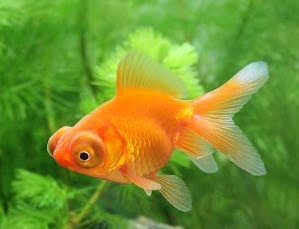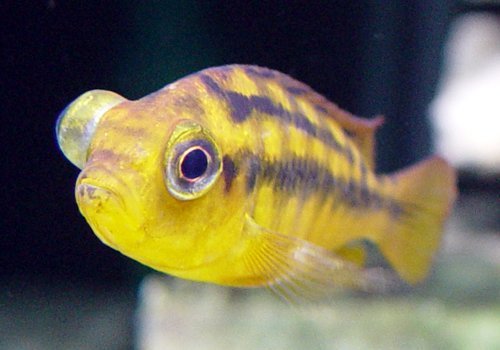Is Popeye disease contagious? Everyone have this question. Popeye disease is the swelling and bulging of a fish’s eye from its socket. Eyes can also be wrinkled. Left untreated, Popeye disease can even cause a fish to lose its eyesight. Injuries or poor water quality can mainly affect the spread of this Popeye disease. Even if we treat this disease, the probability of curing the disease depends on the treatment, environmental conditions, and the health of the fish.
Popeye disease is scientifically known as exophthalmia. This disease pushes the eyeball up and out due to the swelling of the area behind the ear of the fish. The swelling is caused by the tissue fluid that flows into the space between the eyeballs.
If the eye gets an opportunistic bacterial or fungal infection along with this disease, the condition can be more aggravated. The disease affects all fish, regardless of species or environment. Also, the fact that it is freshwater or saltwater fish is irrelevant.

Causes of Popeye Fish Disease
This disease is often caused by an injury, infection, or poor water condition, but not always. In some cases, the cause of this disease cannot be determined precisely. This disease can occur in one eye or both eyes.
- Injuries can be cited as a major cause of this disease. There may be reasons such as a conflict with another fish, or a hard liquid in the tank scratching the eye. It should be better observed whether other animals in the population have such imbalances. The relevant animals should be treated accordingly. When the eye protrudes from an injury, the eye will return to normal as the injury heals.
- Another reason that can affect the appearance of Popeye can be an infection. This can be seen in both eyes when there is a chance of infection. This infection can often be caused by various organisms like bacteria, fungi, and parasites. If the fish suffers from both Popeye and dropsy, the life of the animal is not very good. In such cases, it is very difficult to treat sick animals.
- At the same time, the adverse aquatic environment also causes this disease. Here sensitive and weak animals are the first to suffer from this disease. If a significant number of fish in the water tank are affected by this disease at the same time, it may indicate that it is caused by the imbalance in the water. If the water is very unhealthy, bubbles like small air bubbles can be seen in the water and in the body of the fish.
- Lack of an adequate and balanced diet can also lead to this disease. When fish are not fed a vitamin-rich diet, their immune systems can weaken. This makes them more susceptible to bacterial and fungal infections, which can cause the fish to develop Popeye.
- This disease can also be caused by various plants and decorations used for the decoration of ornamental fish tanks. Sharp or rough-edged decorations can cause physical injury to fish, including eyes. It can cause this disease. The disease can also be spread by pathogenic aquatic plants placed in the tank without proper containment or treatment.
- This disease can also occur with additional air accumulation. These extra air bubbles can affect the fish’s eyes and other internal organs. If these air bubbles accumulate behind the fish’s eyelids, it can cause Popeye.
Popeye is a serious condition that requires immediate treatment. If a treatment can be given very quickly, it will be possible to get a very good result. Although this disease is not fatal in most cases, it can cause many side effects to the fish. If the disease is left untreated, it can lead to eye damage. An animal affected by the disease in both eyes faces major life problems once they lose their sight completely. In such a situation, they cannot easily adapt to the situation, so they can easily be attacked by other animals.
Also, a fish affected by Popeye disease can quickly develop septicemia. This can cause the infection to pass into the bloodstream and make the condition serious. As a result, the fish may succumb to a host of external and internal infections and eventually die. Therefore, it is very important to accurately diagnose Popeye disease and offer the right treatment immediately.
Is Popeye disease contagious?
The transmission of Popeye disease depends on the cause of the disease. If the disease is caused by a wound, it is not contagious. But if the disease is caused by a bacterial or other parasitic infection, it can spread to other flowers very quickly.
Symptoms
The early symptoms of this disease are very subtle. Therefore, it can be difficult to detect the disease before significant damage is done. In the early stages, only the eye is infected, but soon the skin around the eye is affected. Then the eye becomes swollen. Fish that do not have telescoping eyes may develop swelling in one or both eyes caused by fluid leaking into the area behind the eye. If the cornea is broken the eye may become discolored. If the fish is injured it may bleed.
If the infection is not treated until it is severe, they can become blind. Also, the following things can be seen as symptoms of this disease. That is, they are not as active as before and try to hide from other fish. At the same time loss of appetite, loss of body weight and swelling of the body can be indicated. Also, when the disease worsens, the whiteness and erosion of the caramel can be seen. Caramel peeling and body injuries can be seen. Body color can also be weakened.
Treatment
01. Quarantine of infected fish.
If the disease spreads in the tank, it is important to remove animals that are currently showing symptoms and treat them separately. Then the spread to other fishes can be reduced and the diseased fishes can be treated with special attention. The stress of the fish can also be reduced through this isolation treatment.
02. Maintaining water quality.
This disease is easy to control by maintaining proper water balance in the tank. Regular water changes, filtration, and balancing of water parameters are important. It can also reduce the spread of the disease and the stress on the fish.
03. Targeted antibiotics
In severe cases of infection, these targeted antibiotics should be used. The disease can be controlled by giving these drugs in the required dose in the required period of time.
04. Using Epsom salt.
Epsom is a very popular and effective treatment for Popeye disease. It helps to reduce puffiness and remove fluid that can cause puffy eyes. This should also be used in the right context.
05. Stop overfeeding.
The fish should be fed a nutritious diet in the required quantity and at the right time.
Diagnosis of fish Popeye
Diagnosis of Popeye disease in fish can usually be made by visual observation of the fish’s eyes and behavior. Below are some simple steps to diagnose the disease.
01. Observing the eyes of the fish.
In Popeye disease, the fish’s eye may be cloudy or discolored, the eyes may be swollen and the eyes may protrude.
02. Other symptoms.
In addition to swollen eyes, lethargy, loss of appetite, and unusual swimming behavior can be seen in the fish. With these characteristics, the fish can be seen to be very uncomfortable.
03. Check the room environment.
Poor water quality, high ammonia or nitrite levels, and overcrowding can contribute to Popeye growth in fish. For that reason, it is important to regularly check other network parameters including water temperature, pH, ammonia, nitrite, and nitrate levels to maintain them in the appropriate range.
04. Microbiological culture and identification.
Microbiological culture involves isolating and growing microorganisms from a sample such as eye tissue, to identify specific pathogens that can cause Popeye in fish. This will help determine appropriate treatment such as antibiotics or antifungal agents.
05. Gene expression analysis.
Gene expression analysis involves measuring the levels of gene expression in the eye tissue of the fish. This helps identify any changes in gene expression patterns that may indicate underlying factors that contribute to Popeye such as inflammation or the immune response.
06. Removal of other diseased fish.
Some other fish diseases, such as bacterial or fungal infections, can cause symptoms similar to Popeye disease. Therefore, it is imperative to consider the health of the fish in the tank.
- Polymerase chain reaction (PCR) and DNA sequencing.
PCR is a laboratory technique used to amplify specific segments of DNA or RNA from a sample. It can be used to detect the presence of pathogens such as bacteria or viruses in the eye tissue of the fish. PCR can be used to identify specific genes or mutations that may be associated with Popeye in fish. DNA sequencing is a technique used to determine the sequence of nucleotide bases in a DNA molecule. It can be used to identify specific genetic mutations or abnormalities that may contribute to the development of Popeye in fish.
Prevention method
To protect fish from Popeye disease, you can follow strategies such as maintaining good water conditions, providing a diet rich in vitamins, and reducing the stress of the fish.
01. Ensuring optimal water conditions.
Maintaining proper water conditions is essential to stop Popeye disease. Depending on the type of fish, the water parameters required by them vary, so it is mandatory to maintain the water condition as required by the respective species. Especially pH value and temperature are very important.
02. Giving food rich in vitamins.
A balanced and nutritious diet is necessary to prevent any common fish disease that can affect fish. Here too, the food varies depending on the fish species, so it is very important to take proper care of it.
03. Choosing the right decoration.
Different types of decorative items are used to decorate the fish tanks. The materials used for these decorations can also affect the Popeye disease of the fish, so more important attention should be paid to this. Some fish with decorative fins are more prone to injury.
04. Reducing stress.
Fish are easily susceptible to stress caused by poor water conditions, overcrowding, and sudden changes in light or temperature. It weakens their immunity and helps prevent Popeye disease. At the same time, this situation can also be caused by not properly managing the tanks and aggressive behavior.
05. Handling fish with care.
Careful handling of fish during activities such as cleaning and transfer of fish minimizes the risk of injury. The use of appropriate equipment can prevent this injury.
06. Quarantine of new fish.
By putting new fish in a quarantine tank before introducing them to the tank, it is possible to find out if there are any diseases or if there is any danger to them.
Summary
In summary, Popeye disease in aquarium fish is a disease that can affect many species such as betta and goldfish. Fortunately, with knowledge of its triggers, symptoms, and treatment plans you can help your aquatic friends recover quickly while creating an appropriate disease-free habit. To avoid this condition it is essential to provide clean water conditions with high vitamin nutrition. Using appropriate décor will always reduce stress factors and avoid fish.
